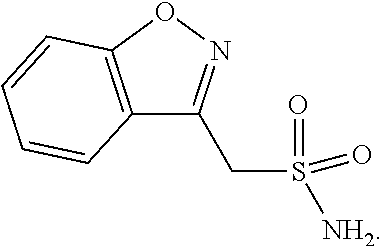Domperidone antineurodegenerative combinations and use
- Summary
- Abstract
- Description
- Claims
- Application Information
AI Technical Summary
Benefits of technology
Problems solved by technology
Method used
Image
Examples
specific embodiments
[0621]As mentioned above, for the treatment of a PMND, the domperidone Component (a), the 6-propylamino-4,5,6,7-tetrahydro-1,3-benzothiazole-2-amine Component (b) and the synergistic agent Component (c) are formulated, separately or in fixed-dose combinations, in a pharmaceutical compositions in dosage unit form, each in admixture with a pharmaceutical carrier or vehicle.
[0622]Thus, according to the three aspects of the invention, for the method (or use) described above each of Component (a), Component (b), Component (c), fixed-dose combination (ab), fixed-dose combination (ac), fixed-dose combination (bc) and fixed-dose combination (abc) is formulated in pharmaceutical compositions comprising an effective amount of domperidone, an effective amount of 6 propylamino-4,5,6,7-tetrahydro-1,3-benzothiazole-2-amine and an an effective amount of at least one synergistic agent selected from the group consisting of fluoxetine, or zonisamide or a statin, in admixture with a pharmaceutical car...
example 1
[0764]A Phase I-II clinical study is conducted in parkinsonian subjects receiving oral doses of pramipexole or rosuvastatin, alone and in combination.
[0765]The objective of the study is to demonstrate that pramipexole and rosuvastatin, when administered together at their standard therapeutic doses, can safely normalize concentrations of synuclein species in peripheral blood exosomes.
[0766]To be enrolled in the study, male or female participants (40 to 89 years of age) are required to carry the diagnosis of Parkinson's disease or a related synucleinopathic disorder. All subjects sign an informed consent form indicating that they understand the purpose of and procedures required for the study and that they are willing to participate in the study and comply with all study procedures and restrictions. Key criteria for exclusion of a subject from enrollment in the study are as follows:[0767]1. Any clinically relevant acute or chronic disease which could interfere with the subjects' safet...
example 2
[0778]A Phase I-II clinical study is conducted in Parkinsonian subjects receiving oral high doses of pramipexole dihydrochloride monohydrate IR (“pramipexole”) with domperidone base (“domperidone”) IR with or without lovastatin IR in patients with moderately advanced PD.
[0779]The objective of the study, conducted as described in Example 1, is to demonstrate that high doses of pramipexole IR co-administered with recommended therapeutic doses of IR domperidone co-administered together with approved therapeutic doses of IR lovastatin, tend to safely normalize concentrations of synuclein species in brain-derived exosomes found in peripheral blood.
[0780]Results show that the oral administration of a combination of pramipexole and domperidone and lovastatin is associated with a tendency to rectify the characteristic alterations in synuclein and synuclein congener concentrations within brain-derived exosomes collected from peripheral venous blood samples from patients who safely tolerate t...
PUM
| Property | Measurement | Unit |
|---|---|---|
| Mass | aaaaa | aaaaa |
| Mass | aaaaa | aaaaa |
| Mass | aaaaa | aaaaa |
Abstract
Description
Claims
Application Information
 Login to View More
Login to View More - R&D
- Intellectual Property
- Life Sciences
- Materials
- Tech Scout
- Unparalleled Data Quality
- Higher Quality Content
- 60% Fewer Hallucinations
Browse by: Latest US Patents, China's latest patents, Technical Efficacy Thesaurus, Application Domain, Technology Topic, Popular Technical Reports.
© 2025 PatSnap. All rights reserved.Legal|Privacy policy|Modern Slavery Act Transparency Statement|Sitemap|About US| Contact US: help@patsnap.com



